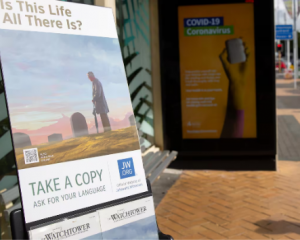A copy of the Canterbury Earthquakes Royal Commission report into the six-storey Christchurch office block's collapse in the February 22, 2011, earthquake - released yesterday - has been given to the Institution of Professional Engineers New Zealand (IPENZ).
A series of engineering, construction and council-related errors over 20 years led to the collapse of the building, the royal commission found.
Prime Minister John Key yesterday said the commission's report made for ''grim and sobering reading''.
It concluded the engineering design of the building was deficient in a number of ways.
It should not have been issued with a building permit because it was not built to the standards of the time. Defects occurred during the construction of the office block, which was poorly supervised by the construction manager.
The royal commission also found that after the first major quake - in September 2010 - the CTV building was ''green-stickered'' by a rapid assessment team and later by three council building officials, none of whom was an engineer.
The report came after the intensive eight-week hearing which heard testimony from more than 80 witnesses, including collapse survivors, witnesses, building designers, architects, engineers, builders and inspectors.
Some angry CTV families have lodged a complaint with IPENZ to have Dr Alan Reay investigated.
Dr Reay's firm, Alan Reay Consultants Ltd, designed the concrete Madras St building that came down in the magnitude 6.3 quake, killing 115 people.
The royal commission report criticised Dr Reay for giving inexperienced engineer David Harding the task of coming up with its design in 1986.
Dr Reay was also criticised for not reviewing design plans, and for playing a part in Christchurch City Council wrongfully signing off a building permit.
The report said Dr Reay did not provide adequate supervision to Mr. Harding.
Mr Harding was ''working beyond his competence'' because he had not designed a complex multistorey structure before, and was inexperienced in the use of a computer modelling program relied on for the design.
As a result, many of the building's features were non-compliant.
Despite the council's buildings engineer, Graeme Tapper, holding concerns about the structural designs, he signed it off in September 1986.
The commission found Mr Tapper and his colleagues had been convinced by Dr Reay their concerns were unfounded.
After the CTV building collapsed, construction defects were found.
While the foreman of the construction was found to be competent, his construction manager Gerald Shirtcliff did not carry out proper or regular inspections at the site.
At one point the construction was not supervised for five months.
Structural weaknesses in the building were identified during its sale in 1990, but the remedies may have weakened the building's ability to withstand seismic activity.
The commission also found that after the September 2010 quake, council assessments declared the building safe without expert advice from an engineer.
Commissioners noted that even if an engineer had been present, there was no guarantee the building would have received a yellow sticker, instead of a green sticker.
Brian Kennedy, spokesman for support group Quake Families, confirmed some families wanted IPENZ to probe Dr Reay's fitness to practise.
''There's a belief that he should be held accountable for what has happened,'' Mr Kennedy, whose wife Faye died in the collapse, said.
''IPENZ has delayed answering the complaint until this report has been released.
''[Some families] believe that everything that was put down on paper has been vindicated by the commission, so ... come on boys, do your thing."
There was no answer at Dr Reay's apartment in Christchurch yesterday. Media calling at his office in Madras St - the same street where the CTV building once stood - were directed to his media statement.
The statement said Dr Reay had not been provided with a copy of the royal commission's report.
''When I receive a copy, I will study it carefully with the assistance of the experts who assisted ARCL and gave extensive evidence to the commission.
''It is premature to make any other comment,'' he said.
IPENZ chief executive Dr Andrew Cleland welcomed the final report, describing it as ''comprehensive and detailed''.
''The engineering community is already working hard to apply the lessons that have been learnt from the collapse of the CTV building, and from the Canterbury earthquakes more generally. The report of the royal commission is an important part of this evolution,'' Dr Cleland said.
''A number of initiatives are under way, and armed with the recommendations of the royal commission we will be building a number of new work programmes to make further strides in improving engineering practice."
IPENZ yesterday declined to comment on any complaints.
The Government will not give an official response to the latest part of the royal commission's investigation until next year.
Mr Key said he wanted to release the report to give families of the dead access to the information as soon as possible.












